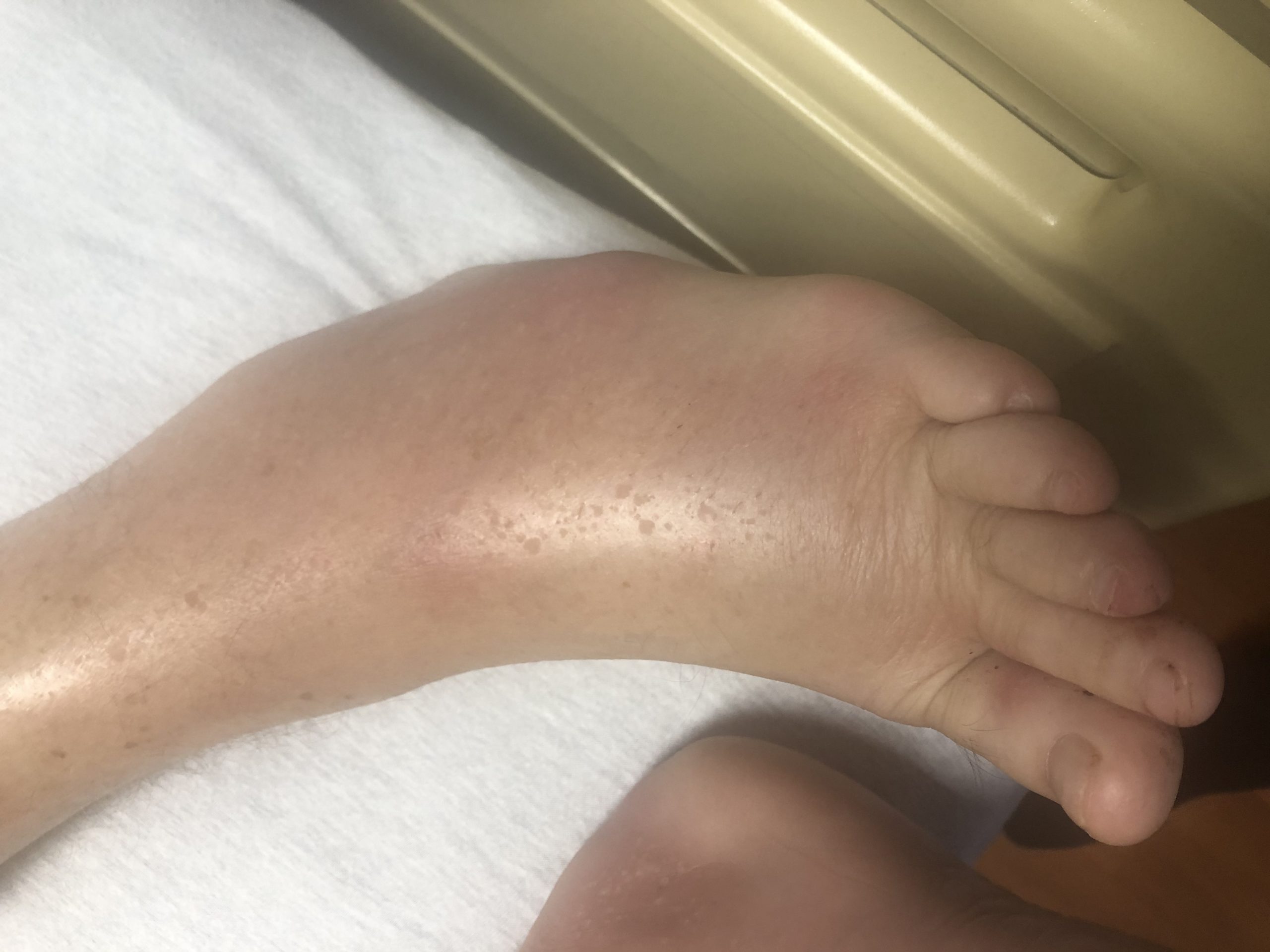Case Presentation: A 70-year-old male with a history of hypertension and alcohol use disorder was referred to our ED for persistently elevated lipase. Two weeks prior he was admitted to an outside hospital for alcohol induced pancreatitis. On presentation, he reported bilateral ankle pain. Vitals were unremarkable. Physical examination was significant for bilateral erythematous, edematous ankles with tenderness to palpation and antalgic gait. Erythematous nodules were noted to his bilateral lower extremities. Abdominal examination was unremarkable. Labs revealed lipase >20,000 U/L and Hb 9.9 g/dl. CT abdomen revealed pancreatitis with an associated pseudocyst. His pancreatitis and immature pseudocyst were managed with IV fluids, IV and oral analgesia and slow diet advancement. Although initially started on vancomycin for presumed cellulitis, subsequent biopsy of a skin nodule revealed inflamed edematous adipocytes and liquefactive necrosis consistent with pancreatic panniculitis. His dermatologic symptoms resolved after a course of oral corticosteroids and octreotide with resolution of pancreatitis.
Discussion: Originally described in 1883, pancreatic panniculitis (PP) remains a rare entity with less than 80 cases reported in literature. Its pathogenesis is generally accepted as that of widespread inflammation, lipolysis and liquefactive fat necrosis due to systemically released pancreatic enzymes. Clinically, PP presents with erythematous, tender, subcutaneous nodules commonly in the lower extremities, and can occur prior, concurrently, or subsequent to pancreatic insult. Polyarthralgia occurs in the setting of intramedullary and/or periarticular fat necrosis and possibly direct extension of necrotic tissue into adjacent joint spaces. The triad of pancreatitis, panniculitis, and polyarthritis, known as PPP syndrome (PPPS) is most associated with pancreatitis and pancreatic cancer with a mortality rate of 24% and 74% respectively. Although corticosteroids and octreotide have been used with modest benefit, treatment of PPPS is primarily supportive with definitive treatment aimed at the underlying pancreatic process. Often confused with erythema nodosum, gout, or septic arthritis, PPPS is under-diagnosed leading to delay of or inappropriate treatment.
Conclusions: Although extra-abdominal manifestations of pancreatitis have been described, dermatologic sequela are uncommon. PP occurs in 0.3-3% of patients, and in a minute subset of these patients, intramedullary fat necrosis can occur with resultant polyarthritis. Prompt recognition of PPPS, especially in the absence of abdominal pain, may allow for early detection of pancreatic pathology, therefore decreasing morbidity and mortality.

